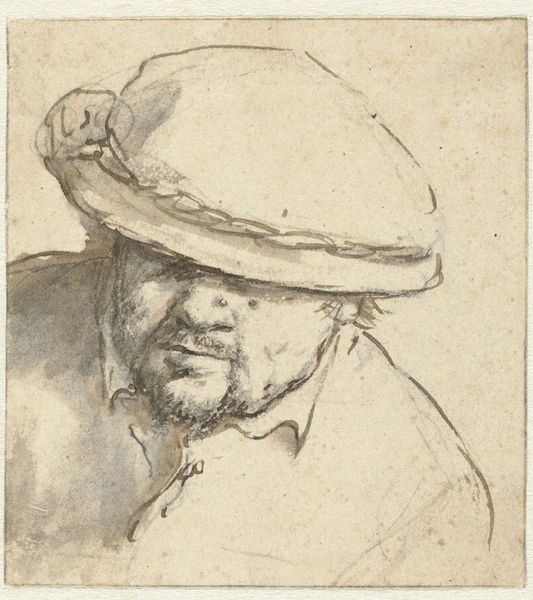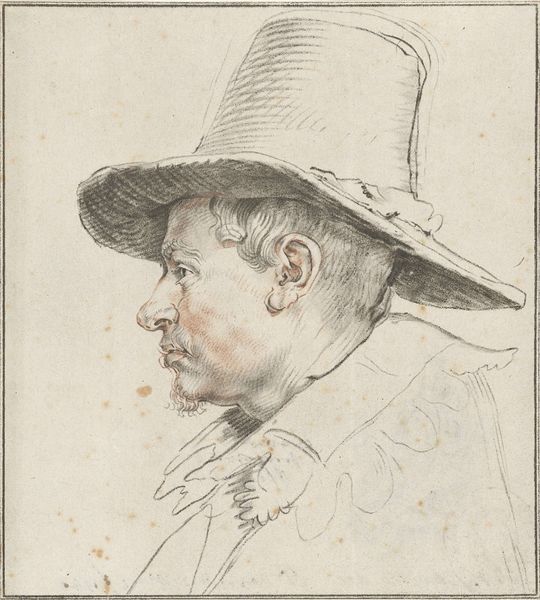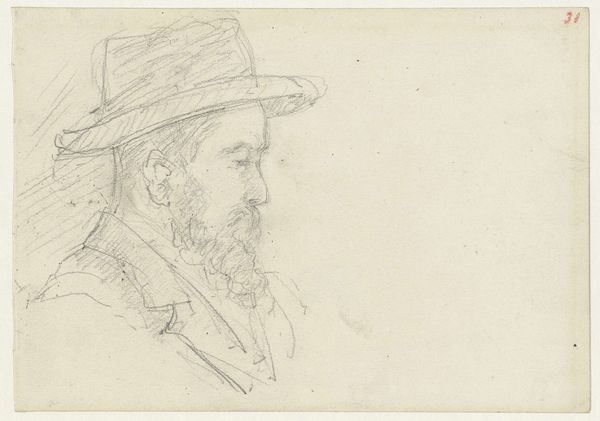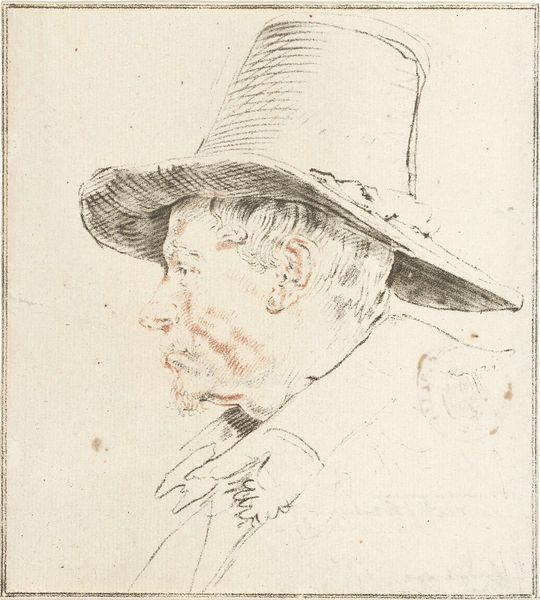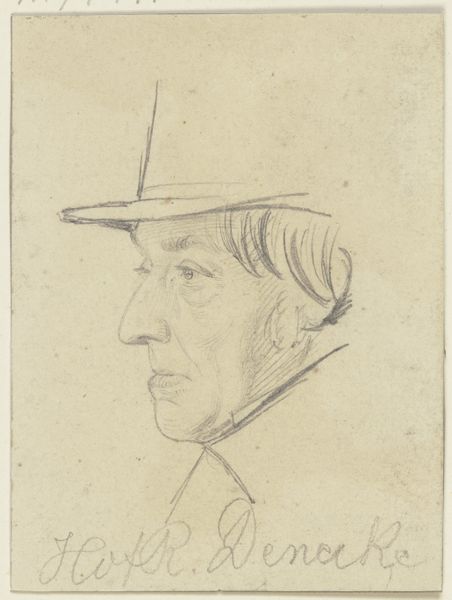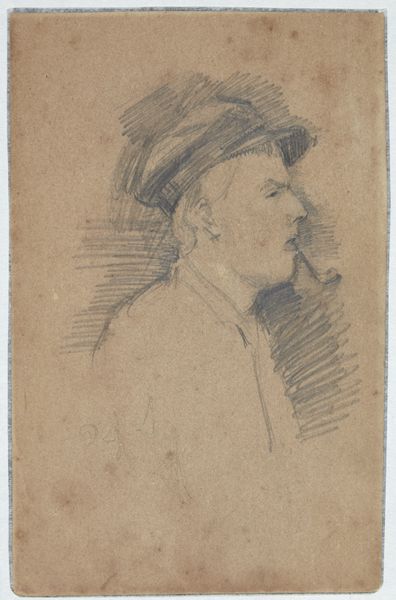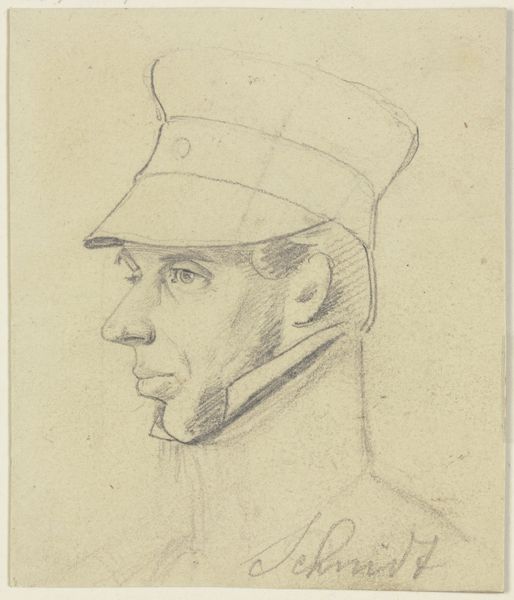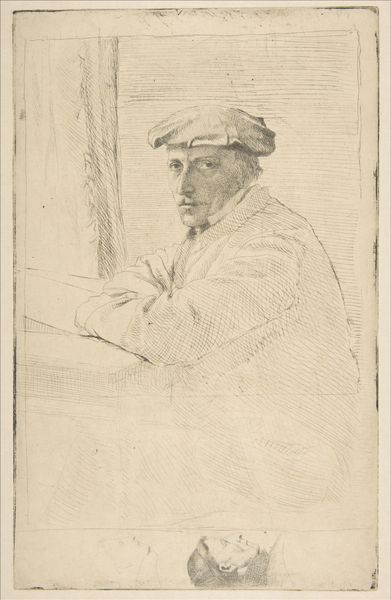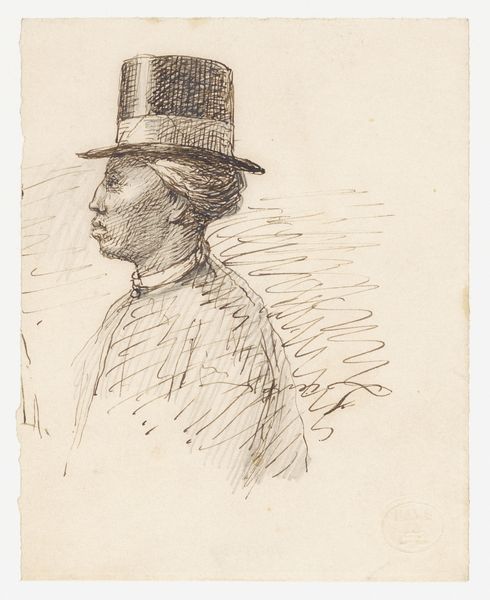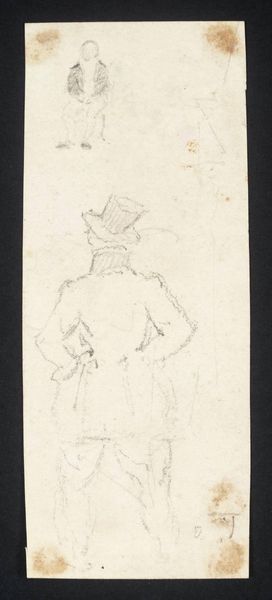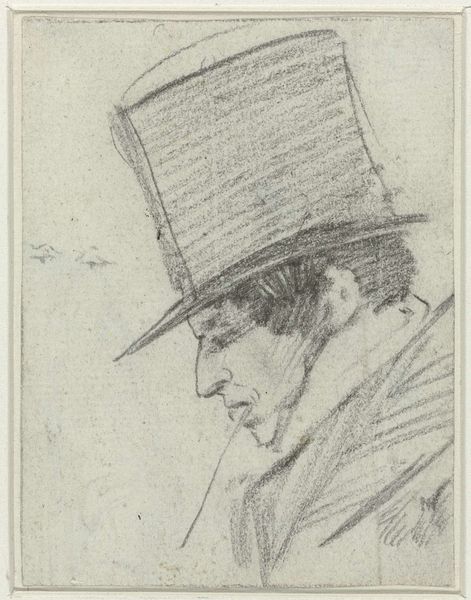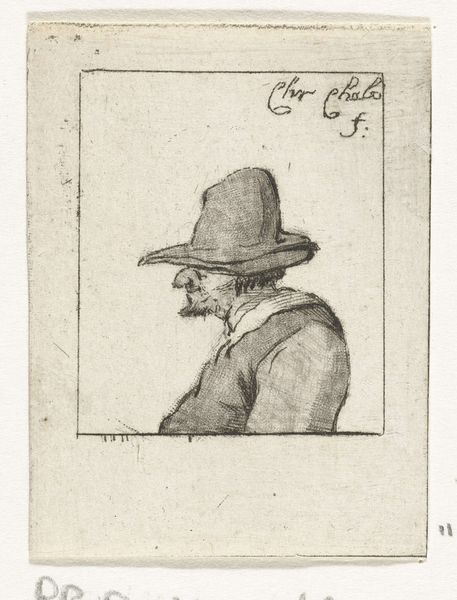
Karikaturistische Ansicht eines Mannes mit Zylinder im Profil nach rechts
0:00
0:00
drawing, paper, pencil
#
portrait
#
drawing
#
paper
#
pencil
#
realism
Copyright: Public Domain
Editor: Here we have Victor Müller's pencil drawing, "Caricature View of a Man with a Top Hat in Profile to the Right," dating from sometime in the 19th century. It has a raw, unfinished feel to it, almost like a quick study. What’s your interpretation? Curator: This drawing embodies the emergent public sphere of the 19th century, specifically how caricature served as social critique. The pencil medium underscores its function as a reproducible image, accessible to a wider audience through printmaking. Do you see the commentary in the man's exaggerated features and austere dress? Editor: I guess I do. It feels like the drawing pokes fun at the seriousness and rigidity of the upper class. But what about the museum setting? Does the shift in context from street to museum change the reading? Curator: Absolutely. The institutional framework of a museum transforms a potentially subversive street caricature into a historical artifact. We sanitize the original rebellious intent when we display it in these hallowed halls. Is it possible, then, that museums participate in controlling what sort of imagery persists through history? Editor: That's a very good point! The museum essentially legitimizes and neutralizes what may have been a form of protest or social commentary. Something originally intended to critique power ends up enshrined by power. Curator: Exactly. And that’s something worth pondering when we view any work of art: whose voice is amplified, and what social structures are at play? Editor: I’ll definitely keep that in mind moving forward. I had only considered how things influenced artists to create but not how institutions give power to works and strip away what might threaten that power. Curator: It's a crucial component often overlooked. This one drawing becomes a fascinating case study!
Comments
No comments
Be the first to comment and join the conversation on the ultimate creative platform.

